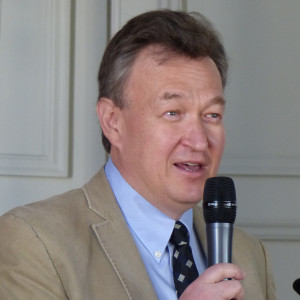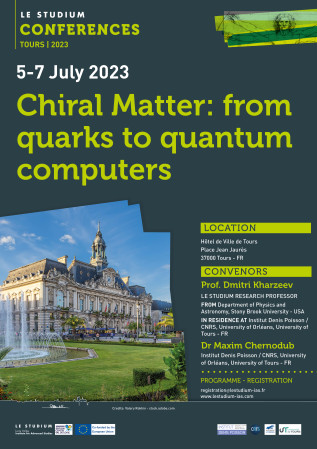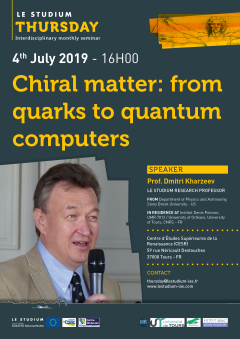Prof. Dmitri Kharzeev

From
Department of Physics and Astronomy, Stony Brook University - US
In residence at
Institut Denis Poisson / CNRS, University of Orléans, University of Tours - FR
Host scientist
Dr Maxim Chernodub
PROJET
Chiral matter: theory and applications
Recent discovery of chiral materials, such as graphene, topological insulators, and Dirac/Weyl semimetals, started an ongoing revolution in key areas of Physics. The new materials hold promise for tackling some of the most serious problems in nanoscience by affording a wide palette of potentially useful behavior for transmission and storage of information and energy. On a fundamental level, there are profound connections between chiral materials of solid state physics and strongly coupled systems of relativistic particles in high-energy physics. These connections are manifested, in particular, by exotic phenomena in quark-gluon plasma discovered at heavy-ion colliders such as RHIC at Brookhaven, USA, and at Large Hadron Collider in Europe. Amazingly, chiral transport is prominent in both solid state and high-energy systems despite a huge (twelve orders of magnitude) difference of appropriate energy scales. These developments call for radically new approaches involving concerted efforts of experts in basic and applied research.
We propose to form a new interdisciplinary Chiral Matter collaboration in Loire Valley to focus on key open problems in study of quantum strongly coupled matter, quantum coherence and topological order. The project will create a network of theoretical and experimental groups in the partner laboratories of Région Centre focused on joint efforts on basic and applied research of chiral matter. The experimental branch of the project is aimed to provide a solid ground for future commercialisation of these ideas in the domains of transmission and storage of energy and information.
The project will foster communication across disciplinary boundaries and among theorists, experimentalists and engineers. It will offer a unique opportunity for training postdocs and students by integrating them in these collaborations.
By providing a versatile setting where researchers of Loire Valley productively interact with international researchers, our collaboration will achieve the goal of advancing applied science in the next few years with far-reaching consequences beyond the academic domain.
Publications
Final reports
Chirality is a recurring cross-disciplinary theme in modern science, from particle physics to biology. In quantum physics, the chirality of fermions is linked to the topology of gauge fields by the chiral anomaly. While the chiral anomaly is usually associated with the short-distance behavior in field theory, recently, it has been realized that it also affects the macroscopic behavior of chiral matter. In particular, the local imbalance between left- and right-handed fermions in the presence of a magnetic field induces non-dissipative transport of electric charge ("the Chiral Magnetic Effect", CME). Recently, the CME has been discovered in Dirac and Weyl semimetals possessing chiral quasi-particles. Here we report on the investigation of related phenomena in non-centrosymmetric superconductors and Josephson junctions and discuss their potential applications in quantum computing.
Chirality is a recurring cross-disciplinary theme in modern science, from particle physics to biology. In quantum physics, the chirality of fermions is linked to the topology of gauge fields by the chiral anomaly. While the chiral anomaly is usually associated with the short-distance behavior in field theory, recently, it has been realized that it also affects the macroscopic behavior of chiral matter. In particular, the local imbalance between left- and right-handed fermions in the presence of a magnetic field induces non-dissipative transport of electric charge ("the Chiral Magnetic Effect", CME). Recently, the CME has been discovered in Dirac and Weyl semimetals possessing chiral quasi-particles. Here we report on the investigation of related phenomena in non-centrosymmetric superconductors and Josephson junctions and discuss their potential applications in quantum computing.


